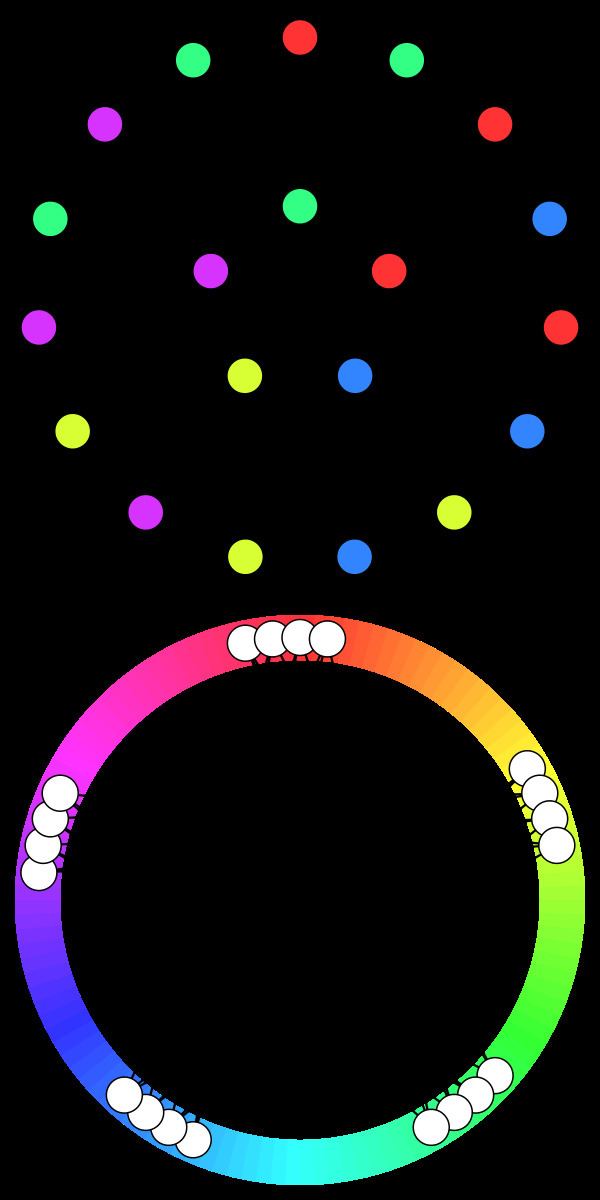Vertices n Chromatic number ⌈n/k⌉ | Edges n(n-2k+1) / 2 | |
 | ||
Girth { ∞ n = 2 k n n = 2 k + 1 4 2 k + 2 ≤ n < 3 k 3 otherwise {\displaystyle \left\{{\begin{array}{ll}\infty &n=2k\\n&n=2k+1\\4&2k+2\leq n<3k\\3&{\text{otherwise}}\end{array}}\right.} Properties (n − 2k + 1)-regularVertex-transitiveCirculantHamiltonian Notation K n / k {\displaystyle K_{n/k}} | ||
In graph theory, circular coloring may be viewed as a refinement of usual graph coloring. The circular chromatic number of a graph
-
χ c ( G ) is the infimum over all real numbersr so that there exists a map fromV ( G ) to a circle of circumference 1 with the property that any two adjacent vertices map to points at distance≥ 1 r -
χ c ( G ) is the infimum over all rational numbersn k V ( G ) to the cyclic groupZ / n Z with the property that adjacent vertices map to elements at distance≥ k apart. - In an oriented graph, declare the imbalance of a cycle
C to be| E ( C ) | divided by the minimum of the number of edges directed clockwise and the number of edges directed counterclockwise. Define the imbalance of the oriented graph to be the maximum imbalance of a cycle. Now,χ c ( G ) is the minimum imbalance of an orientation ofG .
It is relatively easy to see that
Circular coloring was originally defined by Vince (1988), who called it "star coloring".
Coloring is dual to the subject of nowhere-zero flows and indeed, circular coloring has a natural dual notion: circular flows.
Circular complete graphs
For integers
For example, Kn/1 is just the complete graph Kn, while K2n+1 / n is isomorphic to the cycle graph C2n+1.
A circular coloring is then, according to the second definition above, a homomorphism into a circular complete graph. The crucial fact about these graphs is that Ka/b admits a homomorphism into Kc/d if and only if a/b ≤ c/d. This justifies the notation, since if the rational numbers a/b and c/d are equal, then Ka/b and Kc/d are homomorphically equivalent. Moreover, the homomorphism order among them refines the order given by complete graphs into a dense order, corresponding to rational numbers
or equivalently
K2 → C5 → C7 → ... → K3 → K4 → ...The example on the figure can be interpreted as a homomorphism from the flower snark J5 into K5/2 ≈ C5, which comes earlier than K3, corresponding to the fact that
